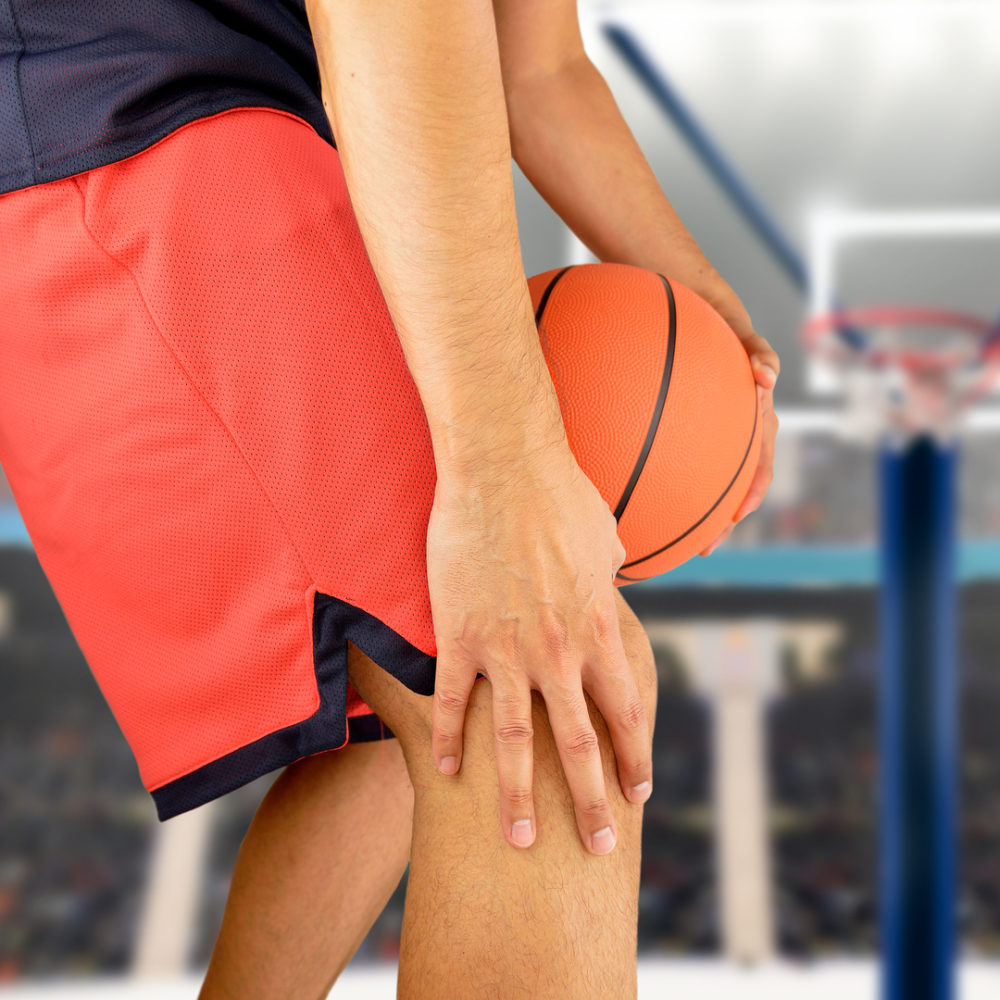The primary focus of rehab programs for jumper’s knee is tendon loading exercises. These exercises require high muscle activation of your quadriceps. But there is much more to rehab than simply strengthening your quads. The final component of your rehab is jump training. This article describes how to improve your jump and landing mechanics in order to decrease stress on your knee.
The Importance of Your Hips in Jumping Sports
A 2016 study out of Brazil looked at 14 volleyball, basketball, and handball athletes with jumper’s knee. Athletes with painful knees had 27% less hip extension strength than athletes without pain. From our experience, athletes with jumper’s knee have very strong quads because of all the jumping they do. However, these same athletes are not as strong in their glutes.
Strong quads and weak glutes will overload your patellar tendon. During jumping and landing, your quads and glutes act as the primary shock absorbers. Your gluteus maximus is the largest muscle in your body. It makes sense for you to activate this muscle as much as possible when landing from a jump. If you don’t land properly, your glutes will not fire enough or at the right time.
Step 1: Strengthen Your Glutes
With Jumper’s knee, an overload of your quadriceps and patellar tendon occurs. A quad-dominant pattern of jumping and landing will lead to patellar tendon overload and pain. In a perfect scenario, the load is balanced by coordinated actions of your glutes, quads, and lower leg muscles.
To achieve this balance, you must first learn to activate your glutes through basic exercises. In this stage, emphasize non-weight-bearing exercises that promote greater glute vs. quad activation. Hip extension performed in a plank position is a perfect example. Do 3 sets of 10-12 repetitions daily.
Next, progress your exercises to include weight-bearing positions. A single-leg RDL promotes activation of your glutes and encourages the hip hinge movement pattern. This movement pattern becomes very important to minimize patellar tendon stress during jumping and landing. As your glute strength improves, progress your program to include progressive loading exercises. These are compound movements like the squat, lunge, and conventional deadlift.
Step 2: Re-Train How You Jump and Land
Heavy slow strength training that balances activation of your glutes and quads is your foundation. Now, you need to incorporate these same concepts into a jump training program.
Improper landings and jumps are characterized by a quad-dominant pattern. The athlete with a quad-dominant landing pattern will land hard and stiff. When landing, the feet will make a loud “slap” or “clank” with the floor or ground. In these cases, the athlete’s glutes are helping very little with absorbing the impact. Instead, most of the load is placed on the quadriceps and patellar tendon.
To jump and land properly there are 2 verbal cues that help. The first is to “push your hips back”. This promotes an action similar to sitting back on a chair. When your hips move back (and your trunk moves forward), activation of your glutes increases. At the same time, the load on your quads decreases.
The second cue is to “land softly” on the balls of your feet. This promotes greater knee bending in your jumps and landings. In essence, we want a nice hip hinge with a deep knee bend when you jump and land.
See Your Physical Therapist to Fully Recover from Jumper’s Knee
Jump training is the final piece to a successful recovery from Jumper’s knee. You will need the help of your physical therapist to master proper jumping and landing techniques. Physical therapists are experts in how your body moves. To optimize your movement patterns, you will need an individualized program.
To beat Jumper’s knee for good, work with your physical therapist. Your physical therapist will fully evaluate your strength, mobility, and movement patterns. Once all contributing factors are identified, a comprehensive rehab program is developed. Call our office to get started. The doctors of physical therapy at BSR have been helping people in Southern Ocean County move without pain since 2007. We are here to help you.

